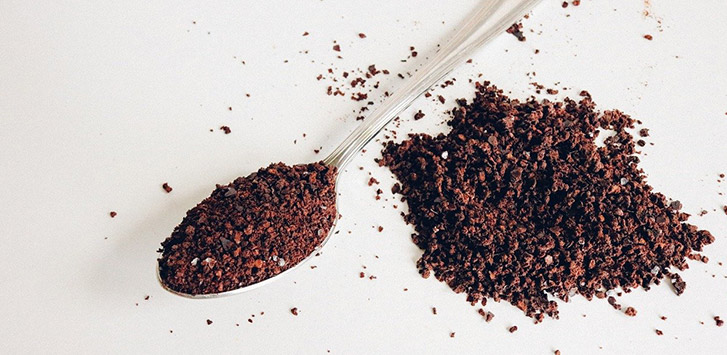
If you are like us, the thought of instant coffee isn’t a pleasant one. Often derided (and rightly so) for its lack of taste, caffeine zing, and pretty much any other metric that we judge coffee by, instant coffee is usually a last resort for the coffee lover. While instant coffee still isn't our first (or second) choice, we wanted to share how to make quality, flavorful instant coffee for those moments when all you have access to are your roasted coffee beans.

Perhaps you’re running low and looking for a way to stretch your coffee beans, or maybe you're going on a weekend-long camping trip and want a delicious cup of coffee in the morning without having to lug around a Moka pot or Aeropress for the whole trip, look no further. We've got you covered with a good instant coffee recipe to make a good cup of coffee more accessible at all times.
How Is Instant Coffee Made?
While older recipes for instant coffee made the coffee into a paste, forming it into a briquette, then adding pieces to hot water, the modern way of creating instant coffee is a bit higher tech.
There are two major production methods for making instant coffee: spray drying and freeze-drying.
Spray drying is what it sounds like. Liquid coffee is sprayed as a very fine mist through a very hot and dry chamber. Hot air that reaches temperatures of about 415F blows this mist downwards.
By the time the mist reaches the bottom of the chamber, the coffee has become a fine powder. This powder is then formed into coffee granules for proper measurement to facilitate packaging.
The other method, freeze-drying, dissolves the roasted coffee beans in water. This mixture is then filtered and further extracted, leaving a coffee concentrate. The concentrate is then frozen at extremely low temperatures, leaving behind the coffee powder that can be reconstituted in water.
While some argue that freeze-drying is the better method, both affect caffeine content and taste. Additionally, both are often derided for being inferior quality; we happen to agree. While instant coffee may be alright in a pinch, it usually possesses a harsh bitterness and has a “rubbery” taste that makes instant coffee generally unpleasant.
How to Make Your Instant Coffee

Criticisms aside, instant coffee doesn’t have to be a bitter, woody drink at all. Quite the opposite in fact. If you find yourself running low on your coffee beans, you can “stretch” them out by making a version of instant coffee that takes its cues from Turkish coffee.
This method is a great way to enjoy the coffee you love without sacrificing the taste. It’s also great for packing for long trips, like vacations and hikes, when you don't want to bring all your brewing equipment. Best part? It's incredibly easy to make and uses tools you already have on hand.
To get started, you'll need e a fine-mesh sieve, coffee grinder, roasted coffee beans (obviously), and an airtight container to keep the coffee fresh.
The steps are simple enough as well…
- Grind the coffee beans into a super fine grind
- Strain grounds through the sieve
- Place the granules in an airtight container for further use
- Boil fresh hot water. Let it cool down some before use so as not to burn or over-extract the coffee
- Add the water to your coffee grounds and stir.
- Wait 10 seconds and then add sugar, creamer, milk, or anything else you'd like
This brewing method, along with your freshly roasted coffee beans, should create a higher quality, flavorful cup of coffee that's easy to brew and actually enjoyable.
While this approach is based on Turkish coffee, there are some slight, subtle differences between the two.
Difference From Turkish Coffee
There a two main differences between our version of instant coffee and Turkish coffee. The first is the difference in grind size. While Turkish coffee is famous for using a fine-like powder, our instant coffee recipe further strains this powder down to a finer size.
The second difference is the brewing method. Turkish coffee is often made with an ibrik and consistently boiled with grounds, creating a rich and creamy body. Whereas our method is similar to that of a French press where the coffee grounds are allowed to steep in the water for a period of time.
Elevate Your Instant Coffee by Roasting Your Own Beans
One way to ensure the highest quality instant coffee is to roast your own coffee beans. Having freshly roasted beans will create a higher quality cup of coffee with better flavor.
At Coffee Bean Corral, we support roasters and coffee enthusiasts at all stages of the journey. You can view our guide on roasting coffee to start building your knowledge.
Additionally, we offer unroasted coffee beans from all over the world of many different flavors, that way we are sure to help make your ideal brew. You can also purchase the best roasters for beginners, as well as grinders and brewers. We will help you choose the equipment that works best for you, as well as tips and tricks for use!
Conclusion
Hopefully, we’ve piqued your interest in attempting to make our version of instant coffee rather than suffering through a cup of a store-bought instant coffee. Let us know what you think if you try it. Till next time, keep on roasting!